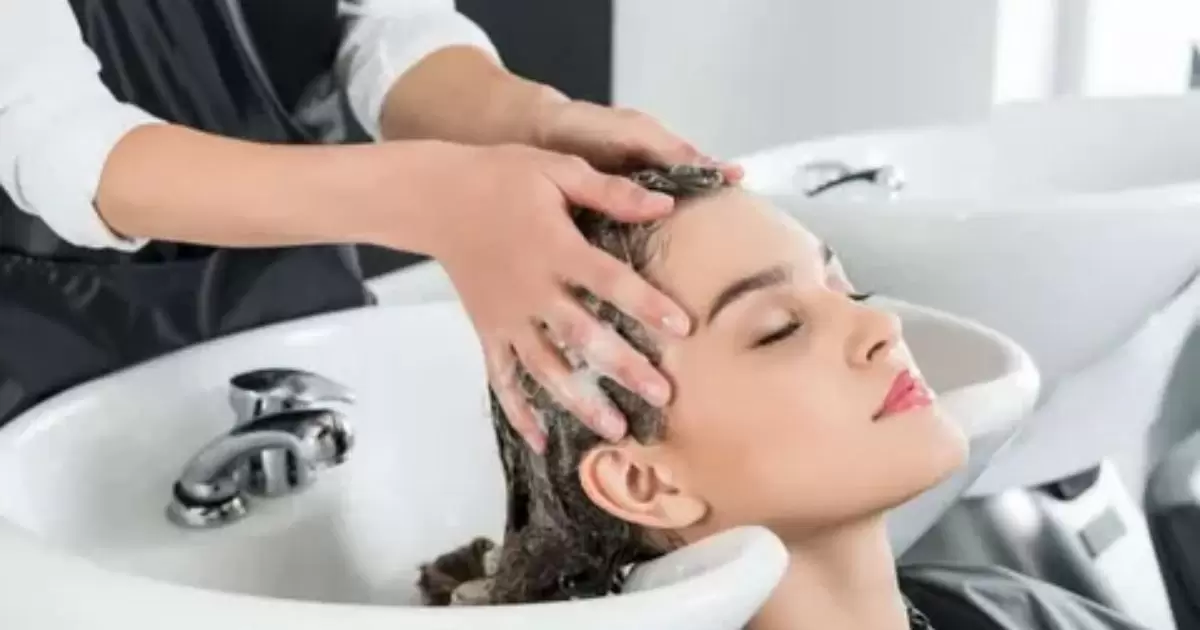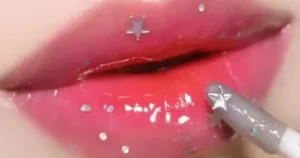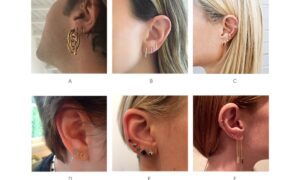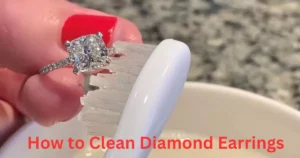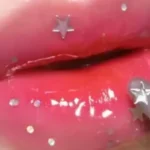Hair colouring is a popular way to change one’s hair color or cover gray hair. However, many people may not fully understand the reasoning behind why salons always wash client’s hair immediately after applying hair dye or color treatment. This blog post will delve into the science and benefits of post-coloring hair washing to better educate readers on this important hair salon process.
The Science Behind Hair Coloring

The science behind how hair dye works helps explain why washing is necessary afterwards. Permanent hair dye uses oxidative dye chemicals like hydrogen peroxide and metallic salts that chemically interact with and penetrate the hair shaft’s porous structure. This chemical process causes a chemical reaction that binds synthetic pigments onto the hair strands, resulting in a new hair color.
However, not all of the dye is able to penetrate and attach within the hair shaft during the coloring process. This leaves excess dye fragments clinging to the hair exterior. If left unwashed, these unbound dye particles could transfer onto pillowcases, clothing, and skin where they may cause irritation or staining . So a post-coloring shampoo is critical to safely remove any surplus dye before it transfers elsewhere.
There are several key reasons why hair salons always professionally wash client’s hair directly after a color service:
To Remove Excess Hair Dye – As mentioned, not all dye fully penetrates the hair shaft during the coloring process. Washing helps remove any unbound excess dye particles from the hair surface and scalp.
To Prepare Your Hair For the Next Treatment – Leaving excess dye could interfere with how the hair responds to future salon services like conditioning treatments, haircuts or additional color applications.
To Make You Feel Comfortable – Coloring chemicals can sometimes cause a gritty or sticky feeling on the hair and scalp. A thorough wash ensures clients leave the salon feeling refreshed.
To Introduce New Products – Salon professionals may apply conditioning treatments or custom products tailored to the client’s new hair color during the post-color rinse.
The Benefits of Washing Hair After Coloring
Beyond professionally ensuring all excess dye is removed, washing hair after a color service provides several hair health benefits:
- It allows any harsh chemicals left on the hair or scalp from the dyeing process to be completely removed, preventing damage or irritation.
- A post-coloring conditioning treatment can nourish and hydrate hair treated with oxidative dyes, which can be drying. This replenishes lost moisture.
- Dirt, debris, product buildup and chlorine/hard water deposits from prior hairwashings are also rinsed away before leaving the salon, resulting in hair that stays cleaner longer.
- Starting fresh allows clients to better monitor their newly colored hair’s condition at home with a standardized cleansing and care routine.
- Stains are less likely to occur on clothes, bedding or skin without excess dye particles remaining on hair strands that could transfer elsewhere.
Finding the Best Hair Color Salon Near Me
When searching for a salon to trust with coloring services and proper post-dye haircare, look for one with experienced, licensed stylists who listen closely to your preferences and needs. Research online reviews and check each salon’s coloring portfolio of before-and-after shots to assess coloring expertise and artistry. Top-rated salons prove their dedication to your hair’s health through a soothing post-color shampoo using high-quality professional products. With the right salon, you too can achieve beautiful, long-lasting color results and flawless hair that always feels refreshed.
Other Post-Coloring Hair Care Tips
In addition to the professional wash at the salon, some additional at-home care strategies can protect your color investment:
Use conditioner to help nourish and protect hair
Choose a deep conditioning hair masque regularly to replenish moisture lost during the chemical coloring process. Look for formulas with grapeseed, jojoba or argan oils.
Avoid heat styling tools for a few days after coloring
The heat from blow dryers and flat irons can cause new color to fade prematurely as it settles into the hair cuticle. Let hair air dry when possible.
Protecting hair from UV rays to prevent fading
Styling sprays, creams or gels with sunscreen ingredients shield color from the sun’s damaging rays, maintaining vibrancy longer between salon visits.
How often to color hair at salon
For gradual color retention, many experts recommend a 4-6 week touch-up schedule. But always trust your stylist’s individualized advice based on your hair type and color goals.
DIY Hair Dye – Should You Wash Your Hair After Coloring It?
For those who opt to try at-home hair coloring instead of salon services, washing hair properly post-dye is equally as important. Be sure to:
- Thoroughly shampoo with a gentle cleanser to remove any excess semi-permanent or demi-permanent hair dye.
- Condition well with a deep hair mask to replenish moisture after the coloring process.
- Avoid other styling products until all dye is fully rinsed away to prevent staining of fabrics and surfaces.
- Test for color transfer by squeezing clean hair – if dye rubs off, continue rinsing until water runs clear.
Proper hair cleansing ensures a smooth coloring result without damage, breakage or unwanted messes. But professional dye jobs always yield superior, longer-lasting results when left to an expert stylist.
When Should You Wash Your Hair After Coloring?
Most experts and hair professionals recommend waiting at least 24 hours after a salon hair coloring service before your first wash at home. This allows sufficient time for the dye to fully develop its vivid shade within the hair shaft before cleansing. Some additional guidelines include:
- If the color appeared light or uneven, delay washing up to 48 hours for best results.
- For those with fine, porous hair prone to damage, 24 hours is usually sufficient.
- Coarser, resistant hair types may only need to wait 12-18 hours before shampooing.
- Always check with your colorist on their individual washing recommendations as well.
Properly spaced washes are important to lock in intense, long-lasting hair color and rinse away chemicals before they have a chance to dry out or weaken hair.
How to Take Care of Colored Hair?
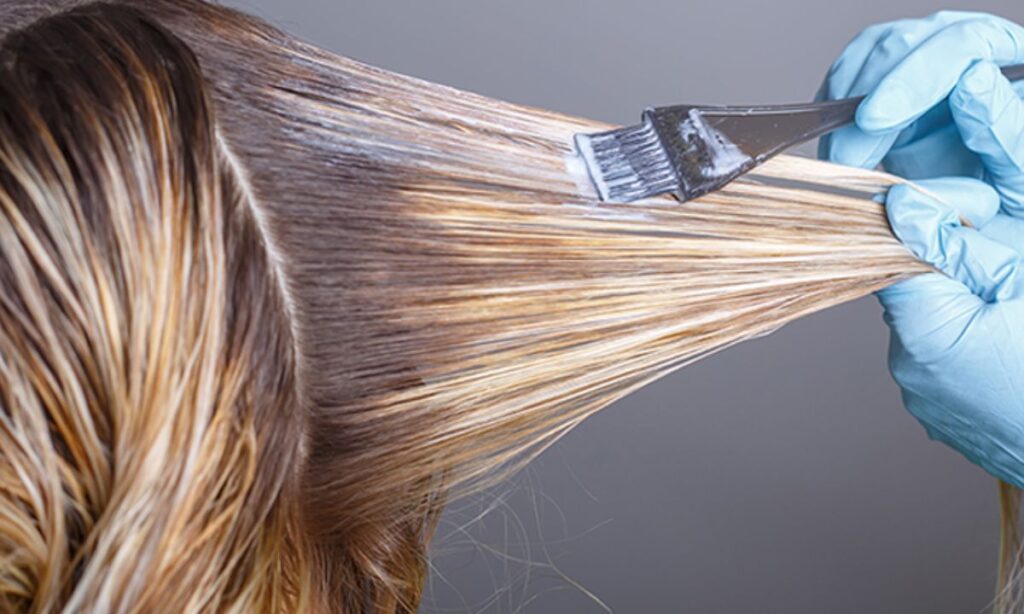
Here are some additional tips for at-home hair maintenance with colored locks:
- Shampoo no more than 2-3 times per week using a sulfate-free cleanser formulated for color-treated hair. Over-cleansing can strip pigment.
- Deep condition weekly with a rich, hydrating hair masque to replenish moisture lost through the chemical process. Look for plant-based oils and butters.
- Limit towel drying and instead let hair air dry or use a microfiber hair towel which is more gentle. Rough cotton towels cause frizz and breakage.
- Trim hair every 6-8 weeks to remove split ends before they cause further damage up the hair shaft and make color fade unevenly.
- Protect from chlorine, saltwater and sunlight which can cause premature fading between salon visits by using leave-in conditioners with UV filters.
- hydrate with lightweight oils like jojoba or argan oil before heat styling, which is especially harsh on colored strands.
With regular TLC and minimizing damage-causing elements, professionally colored hair can look vibrant for months between salon touch-ups.
The Science of Hair Color
As touched on earlier, the science behind hair coloring helps us better understand why salon practices like post-dye washing are important. Here’s a more in-depth look:
Hair is composed mostly of keratin protein chains arranged in overlapping scales called cuticles. Natural melanin pigments (different amounts and types create hair colors) are embedded within the cuticle structure .
Permanent hair dyes work by penetrating the cuticle layers. Oxidative dye precursors, often primary intermediates like p-phenylenediamine (PPD) and toluene-2,5-diamine (PTD), chemically interact with hydrogen peroxide to form free radicals .
These newly formed radicals then bind to -NH2 amino groups on the protein chains within the hair shaft, irreversibly embedding synthetic dye molecules in their place for a new hair color . So shampooing afterwards is crucial to rinse away any unbonded dye particles before they transfer elsewhere or damage the hair and scalp. Proper cleansing optimizes color results.
Is Hair Coloring Good For You?
While hair coloring is a low-risk cosmetic process for most, there are some potential downsides to consider:
- Oxidative dyes involve chemical reactions that can weaken and dry out hair over time if colors are touched-up too frequently without deep conditioning in between.
- PPD and other dye precursors are skin and scalp irritants for those with allergies or sensitivities. A patch test is advised before any new dye formula.
- Some studies have linked PPD exposure to cancers in animal testing, though no proven human health risks have been found at typical consumer exposure levels thus far .
- Frequent bleaching can damage the hair cuticle layers over many treatments, eventually causing breakage and split ends.
However, when used sparingly under a professional’s guidance with proper aftercare, hair coloring is a low health concern for most. Following all safety precautions like doing patch tests, deep conditioning regularly and letting a stylist determine how often to refresh color can help hair and scalp stay healthy long-term. Overall enjoyment and confidence from a personalized hair shade are benefits many feel outweigh the risks.
In conclusion, the post-coloring hair wash performed by qualified salon professionals effectively removes excess dye particles, prepares hair for future services, improves comfort, introduces nourishing products, and promotes hair health – making it a vital step in any hair coloring or dyeing procedure. With the right education and care, both at the salon and home, beautifully hued hair can last between appointments while minimizing damage.
Conclusion
Washing hair after coloring is an important final step in the hair dyeing process that should not be skipped. From a scientific perspective, it removes any unbound dye fragments remaining on the hair surface that could cause issues if left behind. For salons and clients alike, it provides practical benefits like preparing hair for future services, feeling refreshed, and maintaining hair health long-term when paired with correct at-home care.
While hair coloring is a low-risk cosmetic treatment for most when done properly with conditioning treatments, protecting hair from environmental damage, and limiting frequency of dyes to recommended schedules, post-color washing ensures the best coloring results that last vibrantly until the next touch-up visit.
With education on the full coloring process, from choosing an experienced salon to caring for newly colorful locks at home, both stylists and clients can feel confident in achieving beautiful hair goals safely and enjoyably.
